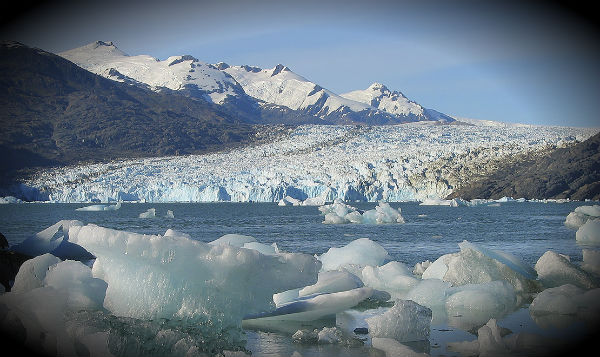Blocks of ice from the Jorge Montt Glacier in southern Chile stolen and then found

Somebody stole blocks of ice from the Jorge Montt Glacier in southern Chile. Agents with Chile’s National Forest Service (CONAF) claim that ice was being stolen from the glacier, located in the Chilean Patagonia region some 1,700 kilometers (1,056 miles) south of Santiago. Police in the southern city of Cochrane arrested driver of a truck loaded with five tons of ice. . Cochrane prosecutor Jose Moris said that the driver was arrested on charges of theft but he could also face charges of crimes against cultural heritage. And by the way, Police put the value of the stolen ice at $6,200. We wonder just one thing – how can you calculate a value of stolen ice?
Jorge Montt Glacier is located in the Aisén Region of Chile, south of the town of Caleta Tortel. It lies at the north end of the Southern Patagonian Ice Field, within Bernardo O’Higgins National Park. The mouth of Pascua River is located in the vicinity of the glacier calving front. The withering glacier is part of the 13,000-square-kilometer (5,020 square mile) Southern Ice Field, the third largest frozen landmass after Antarctica and Greenland, shared by Chile and Argentina
On December 7, the Center of Scientific Studies (CECs), based in the southern city of Valdivia, presented its study on Patagonia’s receding Jorge Montt glacier at the Fundación Imagen de Chile in Santiago. New study shows that the 454-square-kilometer (175 sq mi) Jorge Montt glacier is melting at a rate of a kilometer (0.6 miles) per year, making it one of the world’s most visible milestones of global warming. It was presented by glaciologist and CECs researcher Andrés Rivera, who focused his investigation on changes in the glacier between February 2010 and January 2011. Using a series of 1,445 photos taken throughout this period, scientists found that the glacier shrank roughly 82 feet each day, receding more than half a mile in the course of the year. Researchers presented a video in which 1445 time-lapse photos tracked the glacier’s year-long retreat.

Featured image by Kyle Hammons

Commenting rules and guidelines
We value the thoughts and opinions of our readers and welcome healthy discussions on our website. In order to maintain a respectful and positive community, we ask that all commenters follow these rules.